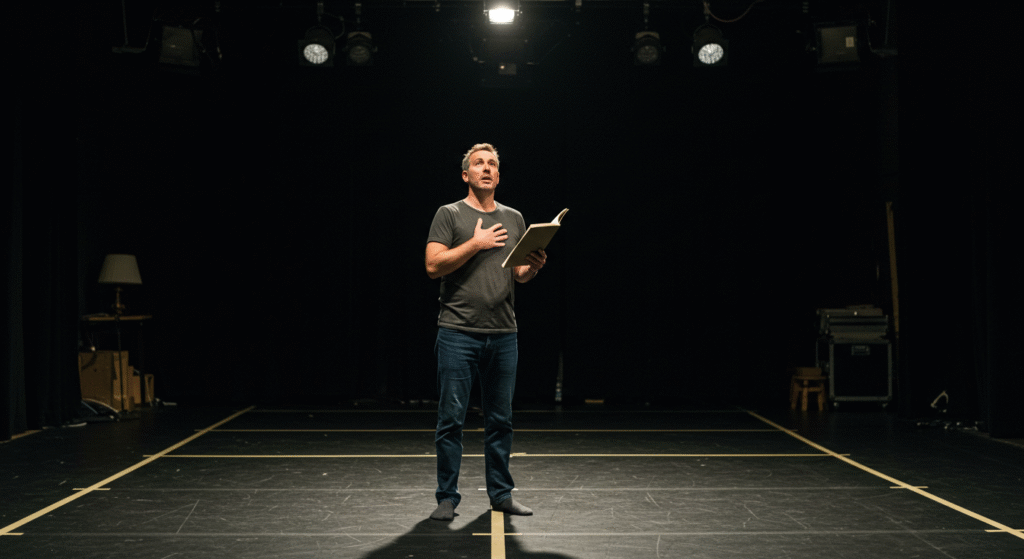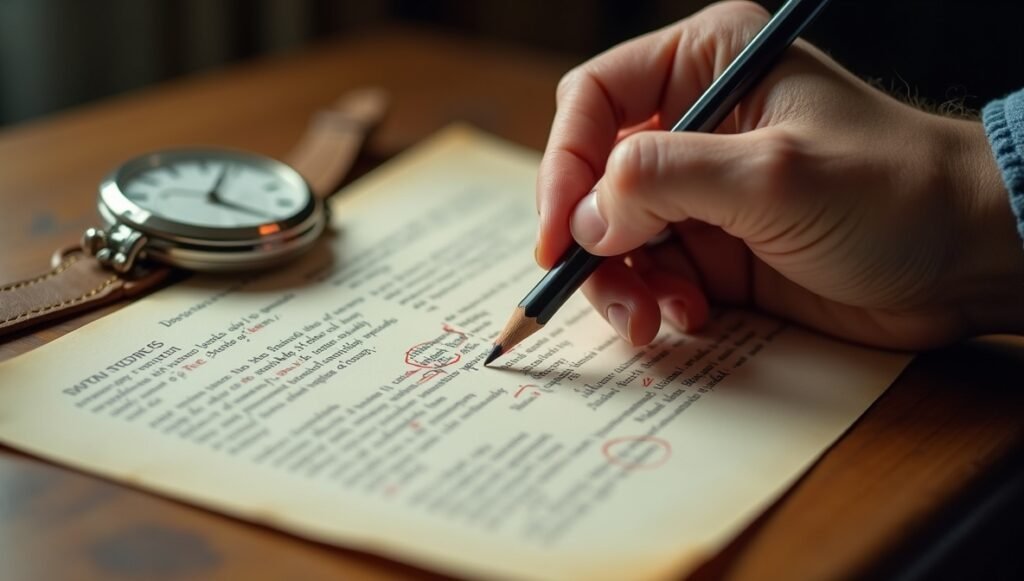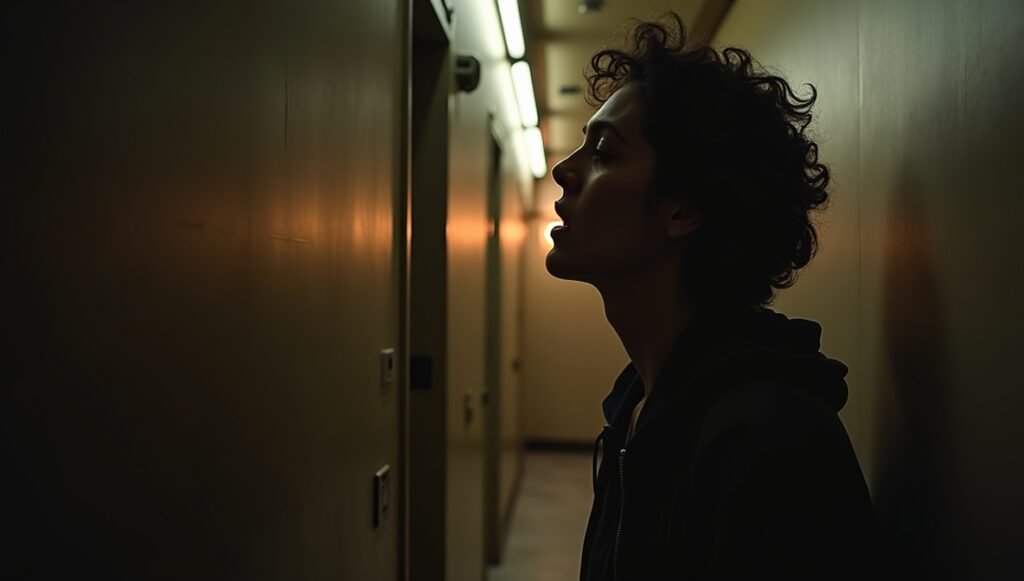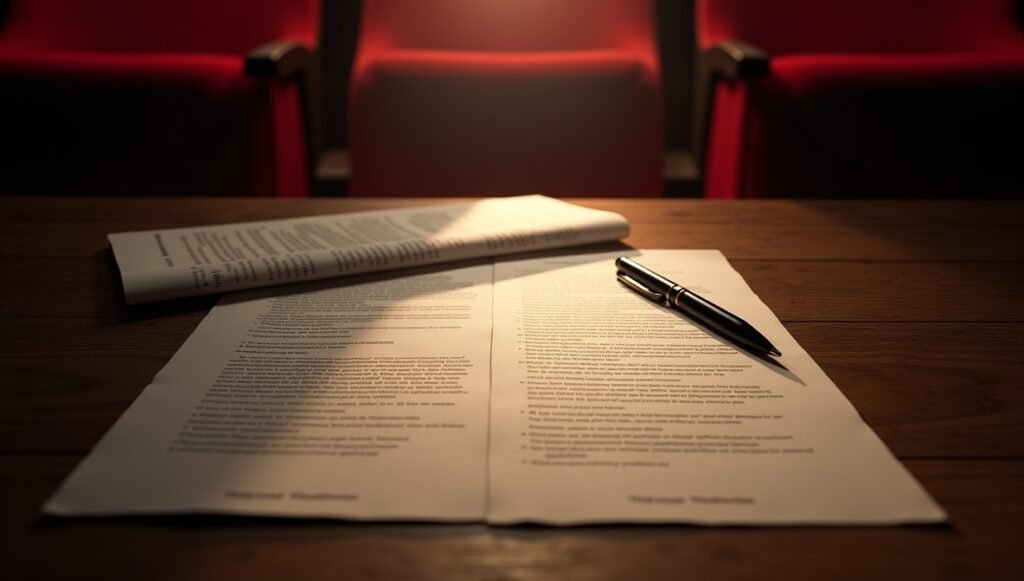Introduction Cold readings—walking into an audition room, receiving a script you’ve never seen, and delivering a compelling performance within minutes—are an actor’s ultimate pop-quiz.
They test text analysis skills, vocal agility, emotional intuition, and composure under pressure. Casting teams use them because they reveal how quickly you turn words into life, how well you take direction, and whether you can connect with a partner on the spot. Mastering cold reading is therefore a career-defining edge: it shortens the path from first impression to callback, showcases professional readiness, and lets you shine even when preparation time is measured in seconds rather than days.
Below you’ll find a step-by-step guide built for working actors, drama students, and anyone preparing for open calls. Each section delivers two in-depth paragraphs to ground the technique, followed by bite-size takeaways you can apply today. Work through them sequentially or jump straight to the skills you need most—either way, by the end you’ll own a toolbox ready for any script that lands in your hands.
1. Understanding Cold Reading

A cold reading is not a reading at all in the casual sense—your goal is performance. The casting table isn’t evaluating how fluently you recite text but whether you interpret intention, make dynamic choices, and reveal character arcs in real time. Knowing this reframes the task: you’re not simply “getting through words”; you’re auditioning the entire engine of your craft—text discovery, emotional clarity, physical commitment—at lightning speed.
It helps to think of cold readings as micro-rehearsals. Great actors condense the normal rehearsal arc (research → exploration → refinement) into minutes. They identify genre, stakes, and relationship cues on first pass, then pick a playable objective that can survive redirections. Treat the page as a map: every punctuation mark signals rhythm; every beat change flags a pivot; every ellipsis hints at hesitation or subtext.
Quick-apply tips
- Shift mindset: Replace “I’m reading” with “I’m performing now.”
- Identify genre immediately: Drama demands silence between beats; sitcoms thrive on punch-and-pace.
- Spot relationship markers: Terms like “Dad,” “Officer,” or a first name define status.
- Assume the scene matters: If it’s in the audition, it highlights the character’s core struggle.
- Accept imperfection: The room forgives lines dropped if the emotional through-line is alive.
2. Immediate Text Analysis

Once the sides are in hand, skim them like a speed chess player: opening, middle, end. First, scan the header for context—episode, scene number, location. Second, read your lines in reverse order (bottom to top) to expose climax first; this clarifies what everything else must build toward. Third, mark operative words—verbs and nouns carrying weight—so your emphasis lands on story, not filler.
During a second pass, search for conflicting clues: sarcasm versus sincerity, humor beneath tension, or vulnerability behind bravado. Cold reading thrives on contradiction because layered choices read as depth. If you find a surprise (e.g., a joke mid-argument), keep it; tonal shifts signal range and directors love actors who instinctively ride those curves.
Quick-apply tips
- Circle key verbs: They drive intention (“need,” “protect,” “confess”).
- Underline reveals: Words that flip the power dynamic or expose secrets.
- Chunk beats: Slash “/” where mood or tactic changes so you feel the turns.
- Note punctuation: Commas invite breath; dashes invite shift; periods land ideas.
- Ask two questions: “What do I want?” and “What blocks me?”—answer fast, play faster.
3. Vocal Techniques on the Fly

Your voice must pivot faster than usual when you have zero memorization time. Start with a thirty-second micro warm-up in the waiting area: lip trills, tongue rolls, gentle humming to open resonance. Focus on placement rather than volume—the quieter the room, the more nuance matters. Control breath by exhaling completely before stepping in; a shallow inhale under stress can trap your pitch high and narrow.
Inside the read, treat text like sheet music: vary rate, pitch, and tone to mirror emotional stakes. Avoid rushing punctuation—fast talking feels nervous, not alive. Instead, lean into operative words, stretch vowels for longing, drop pitch for authority, and add lift on commas for curiosity. A subtle vocal map prevents monotone and lets you react to your partner with musicality.
Quick-apply tips
- 30-second warm-up: Lip trills ×10, hum scale 1-5-1.
- Release tension: Jaw massage while silently mouthing vowels.
- Ride punctuation: Period = full stop, comma = mini lift, question mark = audible lean-forward.
- Land consonants: Crisp endings keep lines intelligible, especially in comedy.
- Use silent breaths: Micro pauses create suspense and give you thinking time without breaking flow.
4. Physicality and Presence

Cold reading rooms can be cramped, but your body remains a storytelling instrument. Establish neutral posture—feet hip-width, soft knees, chest open—before picking up the sides. From there, infuse intentional gestures aligned with beats: a step forward to challenge, a glance away to retreat, shoulders drop in resignation. Even minimal movement reads on the camera (or to the panel) as clear choices rather than nervous fidgeting.
Eye lines often trip up actors glued to the page. Practice the “eye-lift method”: scan phrase → drop eyes for one word → lift to partner for the remainder. It keeps connection alive without sacrificing accuracy. Hold your script at chest height, angled slightly down so you’re not burying your face. If there’s no partner, pick a spot just above the reader’s eyeline and commit to it, adjusting only when the scene calls for shift.
Quick-apply tips
- Ground stance: Balanced and stillness beats pacing circles.
- Purposeful gestures: Link movement to objectives, not nerves.
- Script position: Chest-level “tray” avoids chin dips.
- Eye-lift cycle: Read-drop-connect-deliver—repeat rhythmically.
- Respect space: Move only if it serves status or relationship, not to decorate.
5. Emotional Connection in Seconds

The fastest path to emotion under cold conditions is sensory recall, not backstory research. Choose a physical cue—a breath, a hand over heart, a jaw clench—to trigger feeling. Anchor it to a single vivid memory but don’t dwell; the cue alone can spark sincerity while you stay present in dialogue. Next, articulate a tactic verb (to persuade, to tease, to intimidate): playing action keeps emotion active rather than self-absorbed.
Remember that audition panels perceive truth through micro expressions: eye moisture, vocal crack, slight swallow. Forced tears or over-intensity often read as technique showing. Aim for clear stakes instead: visualize what happens if you fail and let that possibility sit behind your eyes. Authentic tension will follow naturally.
Quick-apply tips
- Pick a trigger: Touch wrist = vulnerability, thumb-finger rub = anger.
- Play action verbs: Shift tactics when partner resists; it fuels variety.
- See the stakes: Imagine success and loss in separate flashes.
- Breathe emotion: Inhale on hope, exhale on surrender.
- Avoid self-commentary: Don’t judge whether you’re “feeling it”—stay in pursuit.
6. Listening and Reacting

Cold reading isn’t a solo sprint; your responsiveness to the reader is under the microscope. Lean in, keep soft focus on their face, and let their cadence influence yours. If the reader is flat (common in auditions), treat it as an acting gift: it forces you to generate stakes from the words themselves. React with micro nods, suppressed smiles, or shifting weight rather than jumping on your next line.
Practicing active listening means hearing the last word they say before launching yours; that single beat ensures you’re answering them, not a line on paper. It also spaces out your delivery, aiding variety and reducing overlap. When you authentically react, the script transforms into conversation, and casting directors lean forward because they believe relationship exists.
Quick-apply tips
- Echo last word silently: Ground yourself in the moment before responding.
- Maintain eye softness: Hard stare feels aggressive unless scene requires.
- Use breath counts: One silent beat after partner’s period = genuine absorption.
- Acknowledge shifts: If they raise volume, let it affect your defense.
- Turn pages quietly: Breaks flow if paper rustles louder than subtext.
7. Handling Direction in the Room

The callback often hinges on your ability to take notes instantly. Directors watch whether you integrate adjustments without apology or visible effort. Listen fully, repeat the note in your own words (“So lean more into suspicion but keep the warmth—got it”), then execute in the very next take. Never preface with excuses about script familiarity; confidence sells adaptability.
When notes appear contradictory—“Louder, but more intimate”—split the difference: increase emotional intensity rather than mere volume. Treat direction as collaboration, not correction. Even if you disagree artistically, deliver it wholeheartedly; you can show your original take later if invited. Professionalism is measured by willingness to explore, not by arguing vision in a five-minute slot.
Quick-apply tips
- Paraphrase back: Confirms understanding and buys thinking time.
- Change one variable: Voice, pace, or physical energy—avoid changing all at once and losing anchor.
- Stay positive: “Great, let’s try it” beats visible hesitation.
- Reset posture: Physically shake shoulders; clears previous choice residue.
- Finish strong: Hold emotional beat after last line; shows confidence in new version.
8. Mental Preparation and Nerves

Adrenaline is inevitable; channel it rather than chase its removal. A 60-second box-breathing cycle (4-4-4-4) lowers heart rate and sharpens focus. Reframe anxiety as readiness: elevated pulse equals heightened awareness, which aids quick discovery on the page. Visualize the room as your rehearsal hall where collaborators await inspiration, not judgment.
Set micro goals: commit to first action, listen fully, land operative words. Small targets calm the mind better than fuzzy aims like “be brilliant.” Lastly, hold gratitude—castings are rare chances to act in front of professionals. A thankful mindset crowds out fear, letting your passion overshadow perfectionism.
Quick-apply tips
- Box-breathe: In 4, hold 4, out 4, hold 4—repeat ×3.
- Label emotion: “Excitement” instead of “panic” flips narrative.
- Anchor object: Touch a pocket stone before entering; signals start of flow state.
- Set three micro goals: Action, listen, operative word—tick them mentally.
- Smile on entry: Primes room for positivity and relaxes facial muscles.
9. Common Pitfalls and Fixes

Rushing lines kills nuance. If nerves speed you up, consciously elongate vowels for three sentences; your tempo resets to natural rhythm. Monotone often stems from chasing words, not intentions—go back to operative verbs and rediscover stakes. Reading eyes-down severs connection; practice the newspaper drill: deliver headlines to a mirror while holding paper waist-height.
Another trap is over-blocking—wandering aimlessly because movement feels like acting. Fix by assigning each beat one clear posture or gesture; stillness then becomes a power choice, not a vacancy. Finally, apology energy—saying “Sorry” after flub—labels you as uncertain. Instead, stay in scene, paraphrase if needed, and finish strong; recovery showcases resilience, a trait every production needs.
Quick-apply tips
- Slow with vowels: Stretch “need” into “nee-e-ed” to reset pace.
- Headline drill: Script held; glance-up delivery to embed eye-lift habit.
- Mark beats physically: One step per tactic change avoids meandering.
- Silence flubs: Skip “sorry,” breathe, continue.
- Review after: Note which pitfall hit and design targeted practice tomorrow.
10. Practice Drills for Mastery

Cold reading skill grows fastest with deliberate, time-boxed drills. Grab random sides online, set a two-minute timer to scan, then perform aloud to camera. Review footage for pacing, eye engagement, and emotional clarity. Alternate genres daily—comedy Monday, procedural Tuesday—to stretch adaptability.
Join or start a weekly cold-read circle. Five actors, five scripts, rotating readers: each gets immediate feedback and direction notes from peers. Supplement with the one-breath technique: pick any short monologue, breathe once, and speak entire piece on that breath; it trains emphasis and phrasing awareness. Consistent rehearsal turns “panic scenario” into muscle memory.
Quick-apply tips
- 2-minute timer: Forces rapid analysis habit.
- Record & review: Self-coaching reveals blind spots.
- Genre rotation: Range sells in pilot season.
- Cold-read circle: Safe space to test riskier choices.
- One-breath monologues: Improves breath control and text shaping.
Conclusion
Cold reading merges instinct with technique. By quickly analyzing text, commanding voice and body, forging instant emotional stakes, listening actively, handling direction with grace, and managing nerves, you transform surprise scripts into showcases for your craft.
Treat every audition like an invitation to collaborate and every slip as a chance to reveal resilience. With the drills outlined above, mastery is a matter of regular reps, not mysterious talent.
Walk into the next casting office ready to play—scripts may be cold, but your performance will be unmistakably alive.

